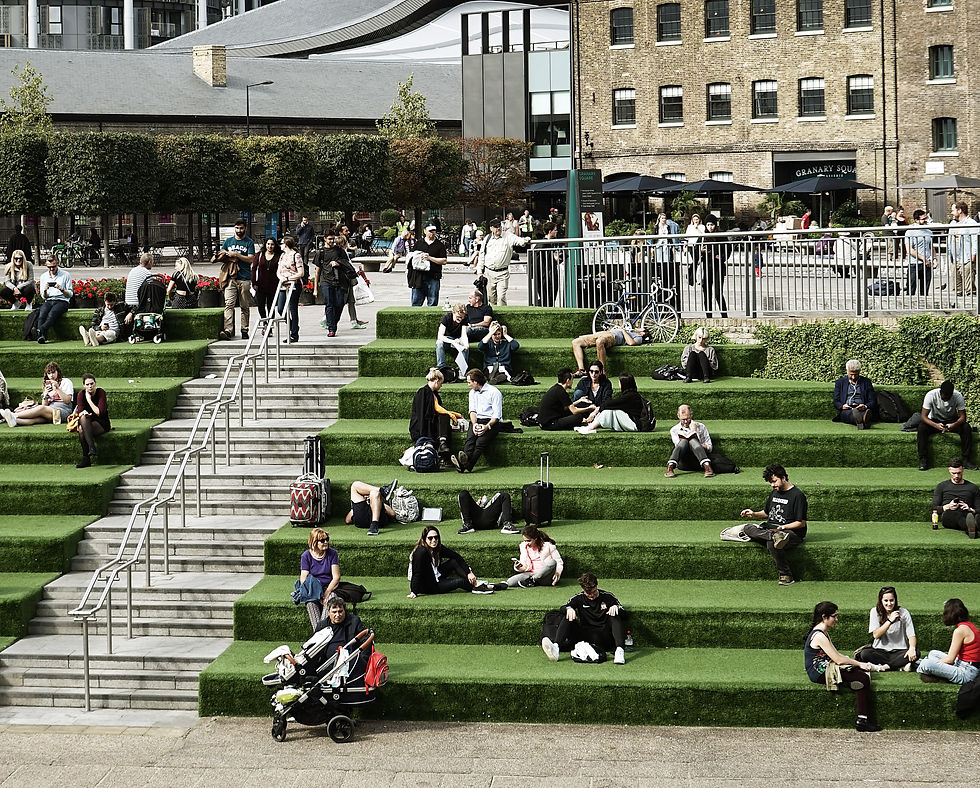

Human-Centric Design and NeuroArchitecture are areas of specialism gaining interest in the built environment industry. There is increasing recognition of the need to address the human and social impacts of design and the potential opportunities this can create.
COMPASSIONATE PLACES
MATTER SPACE SOUL has developed an new approach – the Compassionate Places Method – which draws from a wide range of disciplines; from neuroscience and psychology, to public health, social sciences and the arts. It was published by the Journal of Urban Design and Mental Health in 2025.
Human-centric design strategies can support creating places that intentionally enhance user experience, appeal, and respond to pressing urban issues, such as mental health, loneliness and the need for more inclusive and equitable places.

DESIGN FOR HUMAN & SOCIAL WELLBEING

“The places where we live and work have a significant impact on our health and wellbeing. Whether or not we are aware, they – and their design – affect what we do, how we do it, and how we feel. Despite this, an understanding of these effects is yet to translate itself coherently to the way that we plan and design our cities.
The built environment can be a positive force in improving happiness, health and wellbeing. If these factors were put at the heart of urban design in every community across the UK, the positive impact would be considerable, resulting in better quality of life for millions of people, lower public spending and greater productivity. This is a powerful tool, with even modest changes potentially unlocking up to £15.3bn of financial benefits within a generation.”
A Design for Life report, 2019
WPI Economics for British Land.
NEUROARCHITECTURE
An interdisciplinary field of research that combines insights from neuroscience and psychology, with architecture and design to support creating environments that positively impact human wellbeing. Applying a research-based approach and in-depth knowledge when designing environments can leverage the impact of spaces and places. Findings within the field of neuroscience can enable more conscious, healthy, and sustainable design choices that support human, ecological and economic sustainability.
The field of NeuroArchitecture research emerged in the early 2000s, and the discipline of Environmental Psychology has existed since the 1960s. The first International Centre for NeuroArchitecture and NeuroDesign was established by UCL and Research Institutes of Sweden in 2024.
MATTER SPACE SOUL collaborates closely with a co-founder of the Centre for NeuroArchitecture.

